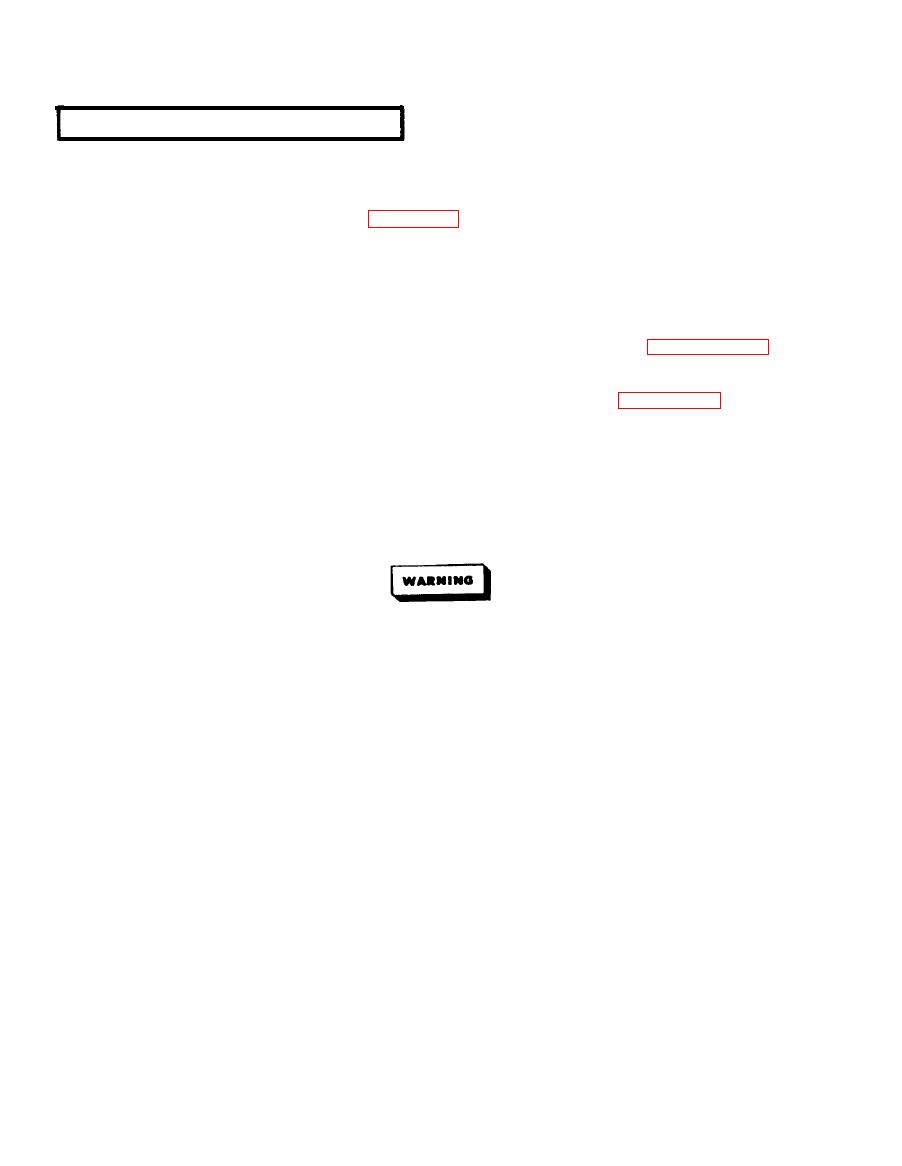 |
|||
|
|
|||
|
|
|||
| ||||||||||
|
|
 TM5-4120383-14
COMPRESSOR. -Continued
5-32.
(e) Secure connector to compressor junction box with screws
and lock washers.
(See fig. 5-21.)
Two people are required
(3) Compressor.
for compressor removal.
(a) Assuming that power has been disconnected at power
source and that covers have been removed during access and testing
proceed as follows:
(b) Discharge and purge refrigerant system per paragraphs
5-11 and 5-12.
(c) Debraze tube connections to compressor (para 5-13).
(d) Lift or tilt air conditioner to gain access to
underside of housing.
(e) Loosen access cover screws and swing the four access
covers out of the way.
(f) Remove four sets of compressor attaching hardware.
If compressor is being removed due to burnout, use
care when lifting to avoid touching compressor
Acid in sludge can cause burns.
sludge.
(g) Carefully lift compressor from unit.
(h) Check compressor, using the following procedure to see
if a motor burnout is indicated.
After removal of a bad compressor from refrigeration
q
system, remove all external tubing and tip
compressor toward discharge port to drain a small
quantity of oil into a clear glass container.
If oil is clean and clear, and does not have a burnt
q
acid smell, the compressor did not fail because of
motor burnout.
If a burnout is not indicated
proceed to c. (Installation).
If oil is black, contains sludge, and has a burnt
q
acid odor, the compressor failed because of motor
burnout.
5-76
|
|
Privacy Statement - Press Release - Copyright Information. - Contact Us |